Is there history in your floorboards? Undertaking a house history involves following the correct steps in order to ensure you have the right information. Recently, State Library of Queensland hosted a seminar on house histories. To summarise the process, I have chosen a multi-gabled timber Queenslander called Derrington, located in Kedron. Built in 1931, the house combines two styles of the period – mock Tudor and multi-gabled, which is locally referred to as 'Ashgrovian'.
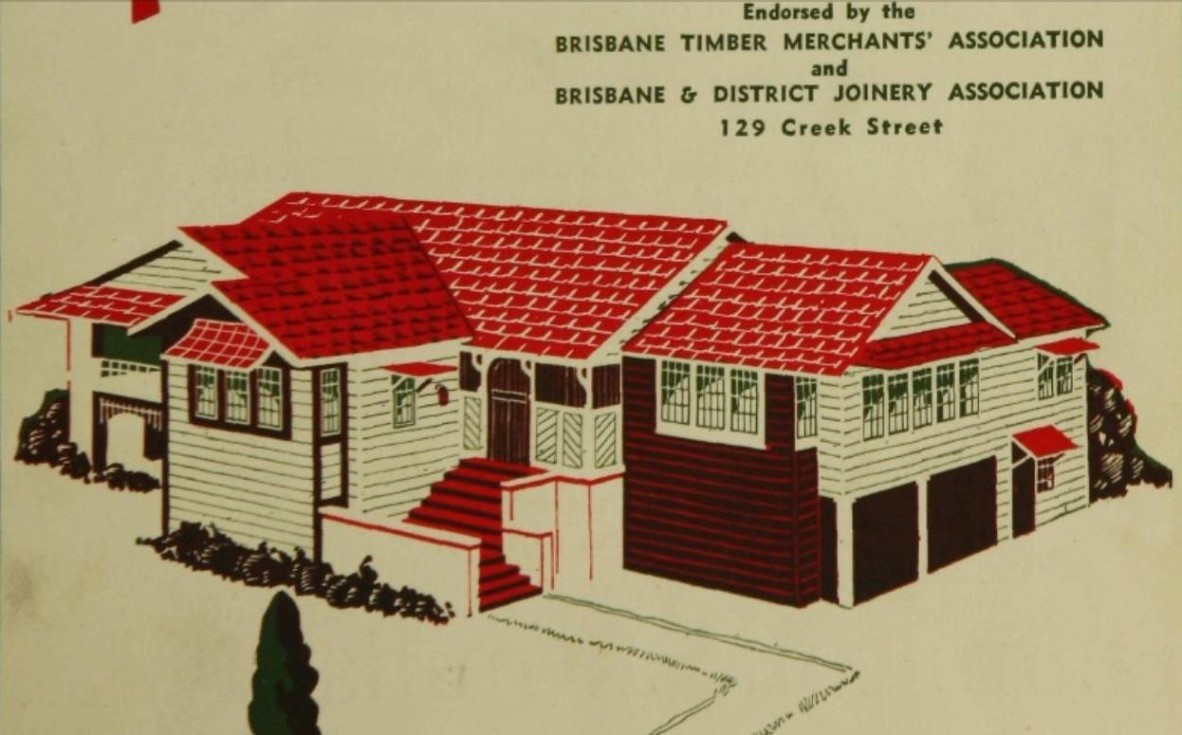
Derrington as shown on the cover of The Homemakers' Book
Derrington was the house chosen to illustrate the front cover of Timber Merchants' Association's 1936 publication, The Homemakers' Book, a copy of which is located in State Library’s collections.
The first step in undertaking a house history is to obtain a Certificate of Title from the Titles Registry Office at 53 Albert Street, Brisbane. The certificate will show who has owned the land from the original Deed of Grant through to the present day. It will also show mortgages over the land, often a reliable indicator that a house was to be constructed. To obtain a Certificate of Title, you will need a Lot on Plan number, usually prefixed by "RP" and available on your rates notice.
The second step is to look for maps of the estate upon which the house was built. Maps put the land in context, and assist in understanding how the land was subdivided, and at what time. The Glen Kedron Estate, as it was called, was subdivided and sold in 1917. State Library of Queensland holds an impressive number of old estate maps from many well-known real estate agents in Brisbane.
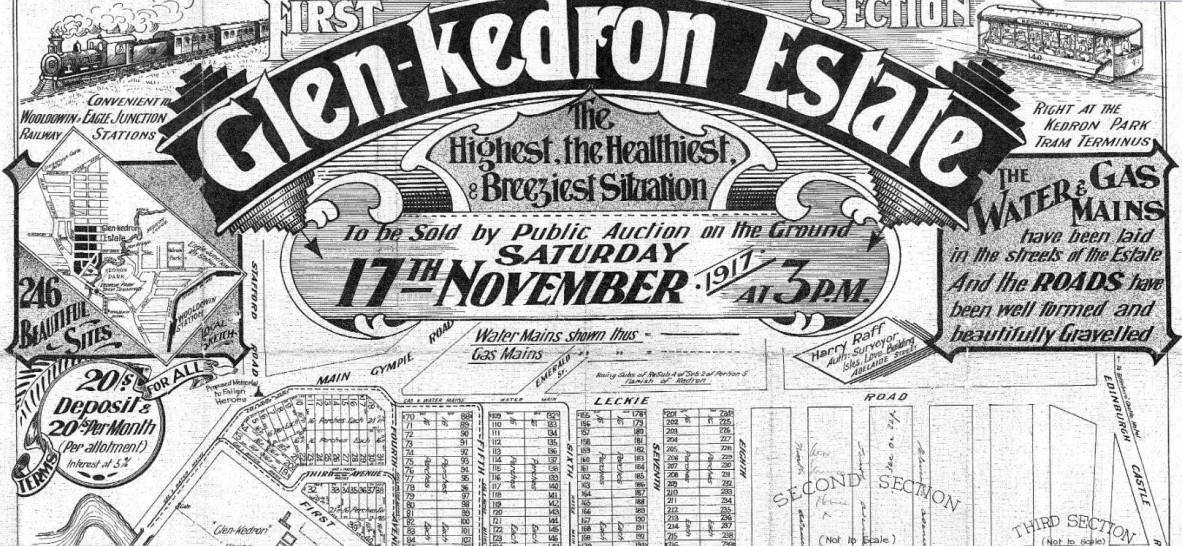
The third step involves looking for house plans, analysing the house style and building materials and finding out if there are architectural plans in existence. Derrington was designed by Eric Percival Trewerne, who has been referred to as the most well-known inter-war architect in Brisbane. State Library has many architectural plans, but those of Eric Trewerne are held by the University of Queensland's Fryer Library. The home was built by J Heywood, information which can be found in the tender advertisements of the Brisbane Courier. As the house was designed by a well-known architect, there were many articles in journals and newspapers, including the magazine Steering Wheel and Home, the equivalent of today’s RACQ magazine, which featured the following article in June 1933.
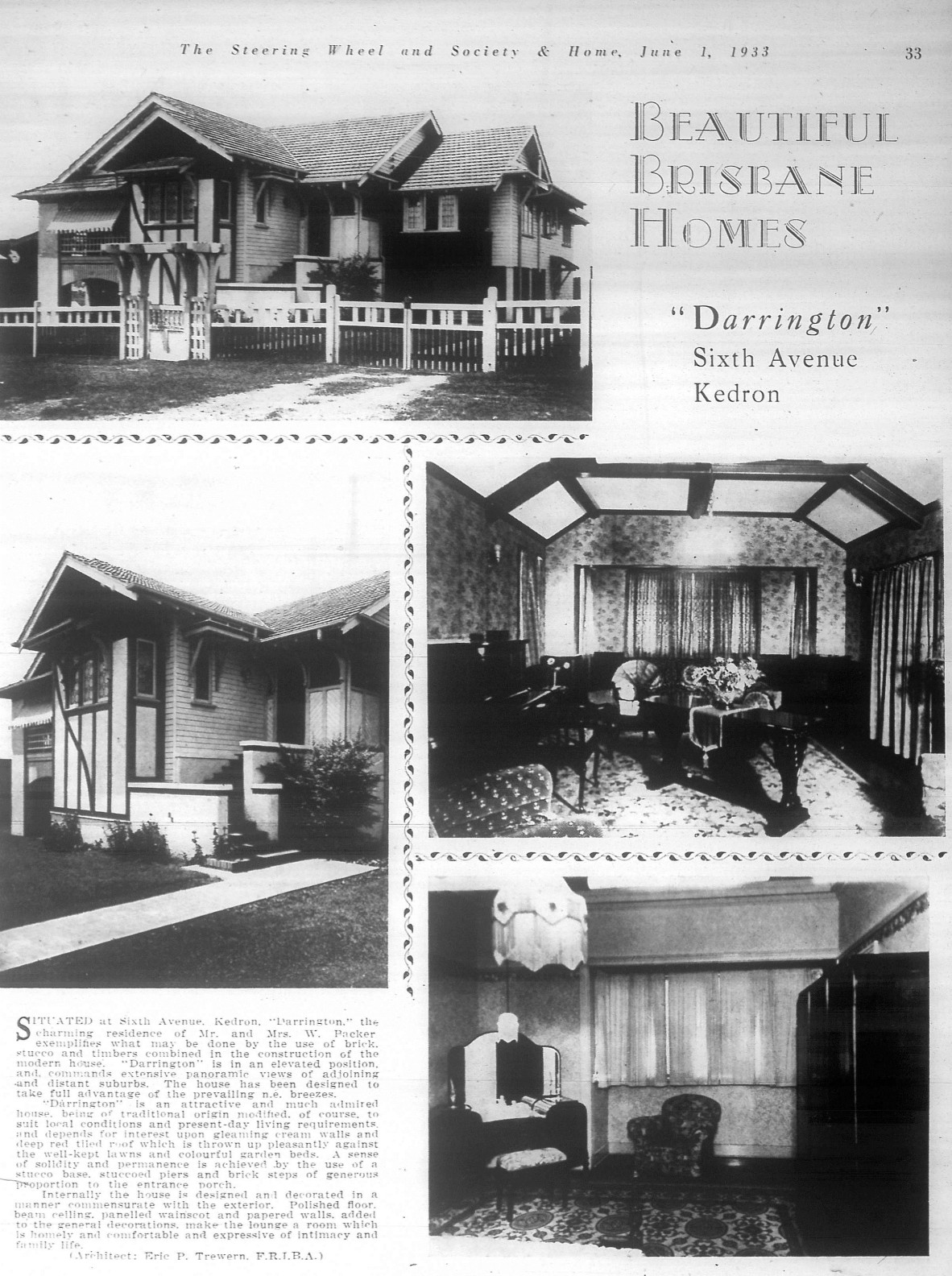
Tudor revival architecture was popular in the 1930s in Australia and although the style lacked suitability for the Queensland climate, Tudor style houses were constructed in wealthier suburbs such as Clayfield, Hamilton, and Ascot to demonstrate the appreciation of our English heritage. The house was also featured in the Brisbane Courier in 1932, in the Home Circle Section, applauding its old English style.
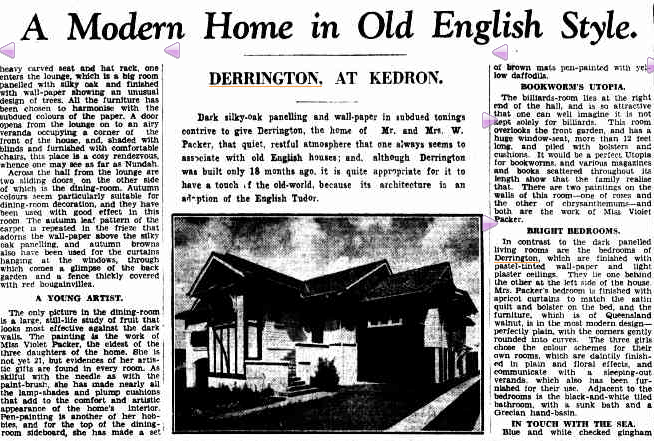
The fourth Step in documenting Derrington involves researching the owners of the house. Derrington was built by William Packer, one of the sons of Joseph Packer of Gloucestershire who established the Wool Scour and Tannery where the large roundabout is today at the intersection of Hamilton and Webster Roads in Chermside. The Tannery operated from 1891 until 1923 as Packer and Knox. Joseph died in 1929, leaving a substantial sum to his sons. The Packer family were well known in Brisbane, and the newspapers recorded the social activities of the family, particularly William and Margaret Packers’ three daughters, Ivy Jean (a medical doctor), Violet and Vera.
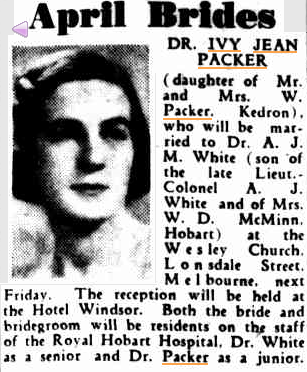
The fifth and sixth steps involve adding photographs and local history to illustrate the era in which the family lived. The Packer family were also very much involved in the history of the Methodist Church in Brisbane. State Library has historical information on Chermside as well as material written by the Packer Family and the Chermside and District Historical Society has a wonderful online summary of the history of the Packer and Knox Tannery, including photographs. http://www.chermsidedistrict.org.au/chermsidedistrict/01_cms/details.asp?ID=120
Adding local history information to complete a house history places the dwelling and the inhabitants in the context of the social history of the era.
Christina Ealing-Godbold
Senior Librarian
Comments
Your email address will not be published.
We welcome relevant, respectful comments.